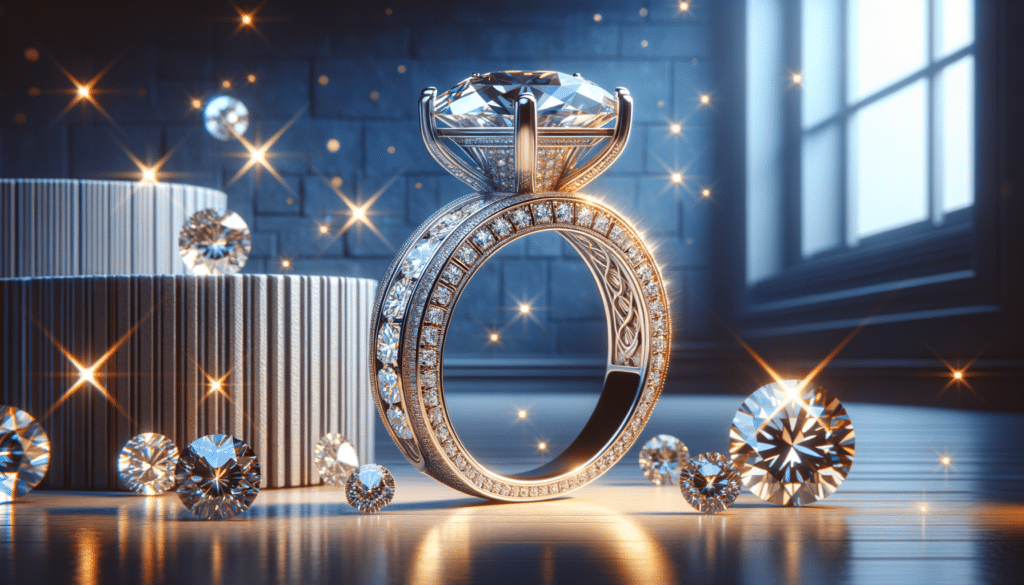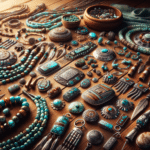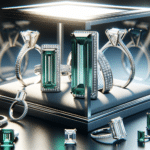The Unique Allure of Moissanite
Moissanite, a gemstone originally discovered in a meteor crater, has a unique allure that captivates jewelry enthusiasts. Its origins lend a sense of cosmic wonder, but it’s the stone’s properties that truly make it stand out. Moissanite exhibits a brilliance that rivals that of diamonds, thanks to its high refractive index. This means that moissanite can reflect light in a way that creates a mesmerizing sparkle, making it an attractive option for those who love a bit of dazzle.
Unlike diamonds, moissanite is not a natural mineral in abundance on Earth. The majority of moissanite used in jewelry today is lab-created, which not only ensures a consistent supply but also addresses ethical concerns associated with mining. This aspect appeals to environmentally conscious consumers who are looking for sustainable and conflict-free options.
Moreover, moissanite’s durability is impressive, ranking 9.25 on the Mohs scale of hardness. This makes it suitable for everyday wear, as it can withstand the rigors of daily life without losing its luster. For those who prefer a stone that combines beauty, durability, and ethical sourcing, moissanite rings offer a compelling choice.
Comparing Moissanite and Diamonds
When considering moissanite rings, a common question arises: how do they compare to diamonds? While both stones share a visual similarity, there are distinct differences worth noting. Firstly, the cost difference is significant. Moissanite is generally more affordable than diamonds, making it an appealing option for those who wish to maximize their budget without compromising on appearance.
In terms of brilliance, moissanite often outshines diamonds. Its higher refractive index means it can sparkle more intensely under light, a feature that many find attractive. However, some purists may prefer the subtle, classic sparkle of diamonds, which have a slightly different luster due to their natural origins.
Color is another aspect where these stones differ. While diamonds are graded on a color scale from D (colorless) to Z (light yellow), moissanite typically appears colorless or near-colorless. However, under certain lighting conditions, moissanite may exhibit a rainbow-like effect, known as the “disco ball effect,” which is less common in diamonds.
Ultimately, the choice between moissanite and diamonds depends on personal preferences and priorities, whether they be cost, brilliance, or ethical considerations.
Current Trends and Notable Designs
The popularity of moissanite rings has soared in recent years, with designers embracing this gemstone in various creative ways. Current trends highlight a shift towards unique and personalized jewelry pieces, and moissanite fits seamlessly into this narrative. From vintage-inspired settings to modern minimalist designs, moissanite rings cater to diverse tastes.
One notable trend is the rise of halo settings, where smaller moissanite stones encircle a larger central stone, enhancing its sparkle and creating a dramatic effect. This style is particularly popular for engagement rings, offering a luxurious look without the hefty price tag associated with diamond halos.
Another trend is the incorporation of colored moissanite stones. While traditional moissanite is colorless, advancements in technology have allowed for the creation of stones in various hues, such as pink, green, and blue. These colored stones add a unique touch to jewelry, appealing to those who desire something different from the classic white gemstone.
In terms of notable designs, many jewelers are experimenting with mixed metals and intricate band designs that complement the brilliance of moissanite. These innovative styles not only highlight the gemstone’s beauty but also provide a wide range of options for consumers looking to express their individuality through jewelry.


